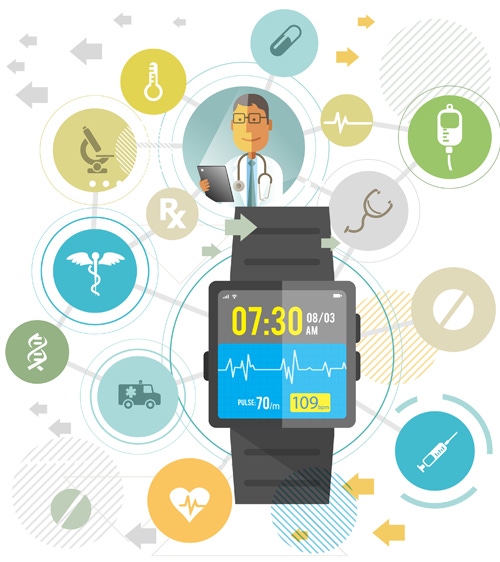What Could be the Next Frontier in Wearables?
An engineering executive from a wearable cardiac monitoring company muses on the future of wearables and remote monitoring in healthcare.
March 25, 2016

An engineering executive from a wearable cardiac monitoring company muses on the future of wearables and remote monitoring in healthcare.
Arundhati Parmar
Wearables and digital health technologies are spurring the remote monitoring of chronic patients, forever transforming the brick-and-mortar model in healthcare and improving its delivery.
These technologies have the power to bend the arc of healthcare costs by reducing hospitalizations, amont other things. That is the firm belief of Brian Kronstedt, manager of hardware product development at Preventice Solutions, which sells the FDA-cleared BodyGuardian, a wearable cardiac and activity monitoring device.
But when asked what could be the next frontier in wearables development, Kronstedt donned his visionary hat to look into the future.
We’ve had Holter devices, ECG cardiac monitoring devices for a long time, but wouldn’t it be great if you could determine glucose levels from a wearable or fluid accumulation from a wearable or blood pressure from a wearable?" Kronstedt said.
Kronstedt will be speaking about how to disrupt healthcare through remote monitoring at BIOMEDevice Boston Conference, at the Boston Convention Center, April 13-14 |
He noted that currently there are wearables with Bluetooth connectivity that can talk with third party devices, but that there is a real opportunity in onboarding other capabilities on to the wearable.
While that would truly bring new capabilities to the wearable, Kronstedt did not downplay the challenges of developing such a device.
"In the medium terms, there is an opportunity to do glucose monitoring onto an ECG wearable as we know it today., [but] this is very much on the bleeding edge of possibility from a technical perspective," he acknowledged.
Back to today's challenges, Kronstedt noted that the current crop of wearables and digital technologies have overcome the device development hurdle, but managing the data is a headache.
"Huge strides have been made in the wearable hardware space, that is the medical device and the relatively straight forward part," he said.
And he would be correct. Just in the wearable cardiac monitoring device space, there's iRhythm Technologies and its Zio XT Patch, Medtronic's Seeq as well as BoduGuardian Heart and then there's AliveCOR's Kardia - a device that can snap on the back of an iphone or wearable like a wristband.
But while the hardware problem has been managed, the data can pose a headache. Especially for products like Preventice's BodyGuardian Heart that can be worn up to 30 days to help in detecting arrhythmias.
"If you have tens of thousands of these devices out in the field, that could translate to hundreds of thousands of events of asymptomatic or symptomatic events that are coming in daily to a monitoring center," Kronstedt said. "Just managing that big data is a challenge."
The value of such technologies is not just the continuous monitoring but more importantly in deriving insight out of the mountain of big data being generated, he said.
But that is a beast that is yet to be tamed.
Arundhati Parmar is senior editor at MD+DI. Reach her at [email protected] and on Twitter @aparmarbb
Register for the BIOMEDevice Boston Conference, at the Boston Convention Center, April 13-14, to stay on top of industry trends. |
You May Also Like


